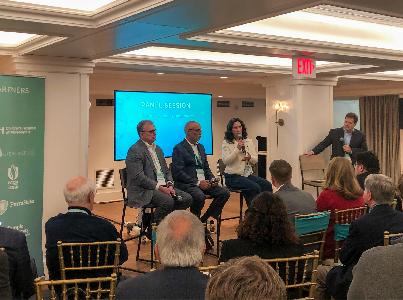Most people hate most advertising most of the time.
This may seem like an ill-advised thing for a marketing guy like me to say — but it doesn’t make it untrue.
In fact, on May 5, I’ll be presenting a seminar called “The Tao of Content Marketing” as part of Philly Tech Week 2016, and this will be my opening line. Because, whether businesses like it or not, people are starting to tune out advertising in alarming numbers. And if marketers don’t start re-thinking the way they engage modern audiences, they’re going to find themselves wasting millions of media dollars and losing hordes of clients.
Consider the following:
- In a survey conducted by Adobe, respondents were asked to select the best adjective to describe advertising. 68 percent chose “annoying.”
- The McCarthy Group published a survey shortly afterward, in which 84 percent of one demographic said they “don’t trust advertising.”
The average American adult has to endure around 5,000 promotional messages each day: TV commercials, billboards, emails, display ads, cold calls, radio/mobile audio ads … not to mention logos everywhere. And now they’ve reached a point where they’ve had enough.
People are taking back control, and finding alternate routes to their buying decisions. Search engines give them access to googols of information. Social media lets them consult with the most important people in their lives, virtually whenever they want.
Still, most marketers ignore what all this means. Instead of recognizing that people are using technology because they want us to leave them alone, marketers get consumed with how they should be using technology to force more messages down their throats. Regardless of what medium you’re using, you’re on the wrong track if your message implies, “Here’s what I want from you.” Because truly innovative marketing is that which implies, “Here’s how I can help you.”
The way forward isn’t technological, it’s philosophical.
Counterintuitive as it may sound, today’s most effective marketing is that which doesn’t try to sell at all. Rather than seeing each engagement as a potential transaction (e.g., “click here to buy”), forward thinkers see it as an opportunity to provide value and earn trust (e.g., “click here for an article/infographic/video that answers your question”). To truly engage people in 2016, you must be helpful to them — and one of the best ways of doing this is to provide credible, useful content.
A customer relationship is like any relationship in that, if it’s going to be meaningful and lasting, you have to be thoughtful when it comes to the other.
As the Dalai Lama once wrote:
Compassion is an aspiration, a state of mind … an empathetic altruism that actively strives to free others from suffering.
Or, as Rand Fishkin, CEO and Founder of SEOmoz, put it:
Best way to sell something: don’t sell anything. Earn the awareness, respect, and trust of those who might buy.
If you truly consider your audience’s needs, and give them something that truly helps, they won’t ignore you. Rather, they’ll listen and give you their trust. That is the key: because people want to buy from those they trust, not from those who are constantly reaching into their pockets.
And that is the Tao of Content Marketing.
Join the conversation!
Find news, events, jobs and people who share your interests on Technical.ly's open community Slack

Philly daily roundup: East Market coworking; Temple's $2.5M engineering donation; WITS spring summit

Philly daily roundup: Jason Bannon leaves Ben Franklin; $26M for narcolepsy treatment; Philly Tech Calendar turns one

Philly daily roundup: Closed hospital into tech hub; Pew State of the City; PHL Open for Business
